Year 2
The proficiency strands understanding, fluency, problem-solving and reasoning are an integral part of mathematics content across the three content strands: number and algebra, measurement and geometry, and statistics and probability. The proficiencies reinforce the significance of working mathematically within the content and describe how the content is explored or developed. They provide the language to build in the developmental aspects of the learning of mathematics. The achievement standards reflect the content and encompass the proficiencies.
At this year level:
- understanding includes connecting number calculations with counting sequences, partitioning and combining numbers flexibly and identifying and describing the relationship between addition and subtraction and between multiplication and division
- fluency includes readily counting numbers in sequences, using informal units iteratively to compare measurements, using the language of chance to describe outcomes of familiar chance events and describing and comparing time durations
- problem-solving includes formulating problems from authentic situations, making models and using number sentences that represent problem situations, and matching transformations with their original shape
- reasoning includes using known facts to derive strategies for unfamiliar calculations, comparing and contrasting related models of operations and creating and interpreting simple representations of data.
(source: www.australiancurriculum.edu.au)
Achievement Standard
By the end of Year 2, students recognise increasing and decreasing number sequences involving 2s, 3s and 5s. They represent multiplication and division by grouping into sets. They associate collections of Australian coins with their value. Students identify the missing element in a number sequence. Students recognise the features of three-dimensional objects. They interpret simple maps of familiar locations. They explain the effects of one-step transformations. Students make sense of collected information.
Students count to and from 1000. They perform simple addition and subtraction calculations using a range of strategies. They divide collections and shapes into halves, quarters and eighths. Students order shapes and objects using informal units. They tell time to the quarter-hour and use a calendar to identify the date and the months included in seasons. They draw two-dimensional shapes. They describe outcomes for everyday events. Students collect, organise and represent data to make simple inferences.
(source: www.australiancurriculum.edu.au)
- Plus Plan
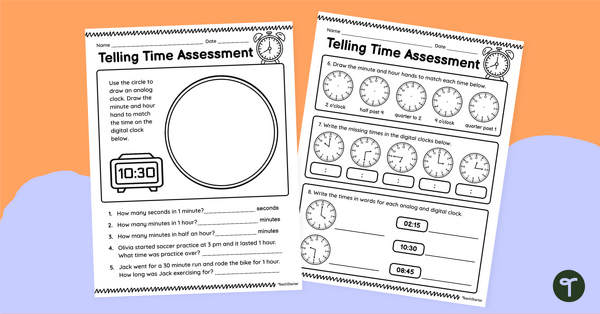
Telling Time - Year 2 Maths Test
Administer a Telling Time Maths Test to determine mastery of year 2 clock reading skills.
- Plus Plan
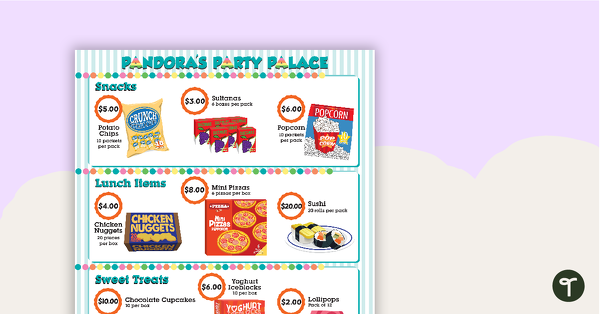
Pandora's Party Palace Maths Activity – Lower Years
16 mathematics problem solving task cards involving money in a real-world context.
- Plus Plan
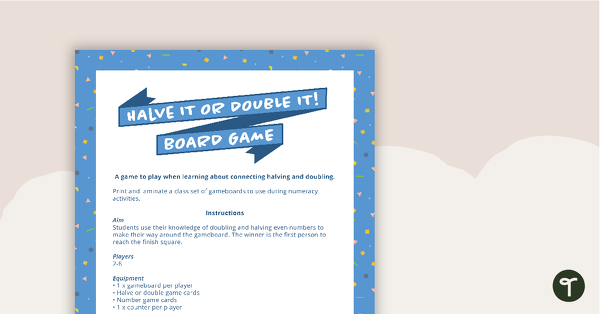
Halve it or Double it! - Maths Game
A hands-on game to play when learning about connecting halving and doubling.
- Plus Plan
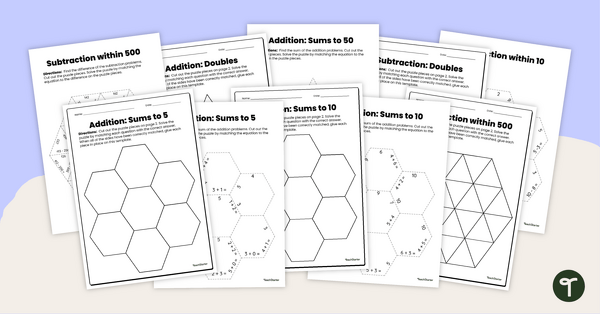
20 Polygon Puzzles - Addition and Subtraction Pack
Explore addition and subtraction with this fun polygon puzzle pack.
- Plus Plan
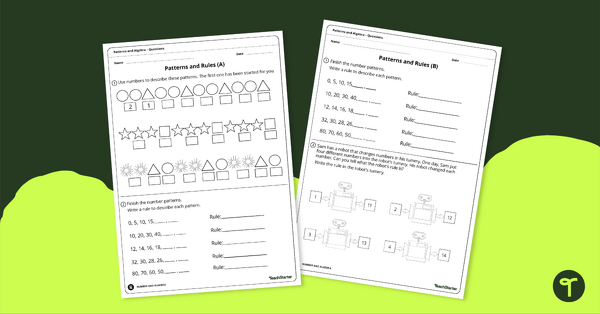
Number Patterns Year 1 Worksheet Set
Share this number patterns year 1 worksheet set with your students to introduce them to early concepts of algebra.
- Plus Plan
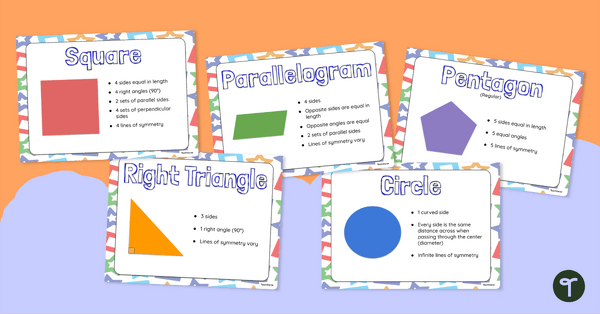
2D Shapes Poster Set
Hang this 2D shapes poster set in your classroom to give students an easy reference for the attributes of two dimensional shapes.
- Free Plan
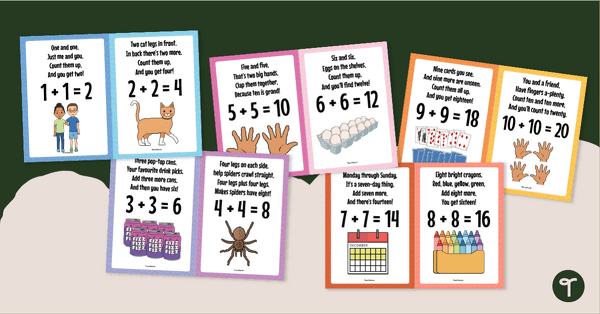
Doubles Facts - Doubling Numbers Addition Rhyme Posters
Help your students remember their doubles facts to twenty with a set of printable double facts addition rhyme posters.
- Plus Plan
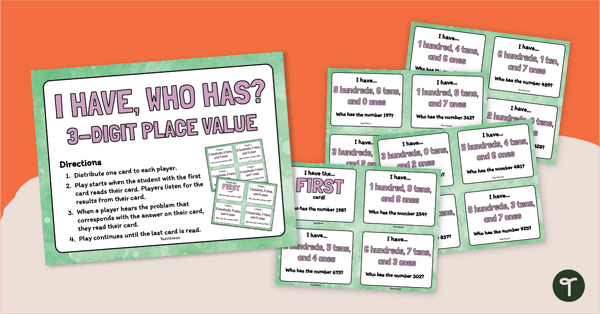
I Have, Who Has? - Place Value Card Game (3-Digit Numbers)
Play an exciting I Have, Who Has? Place Value Game to help your students practise their skills with reading and writing three-digit numbers.
- Plus Plan
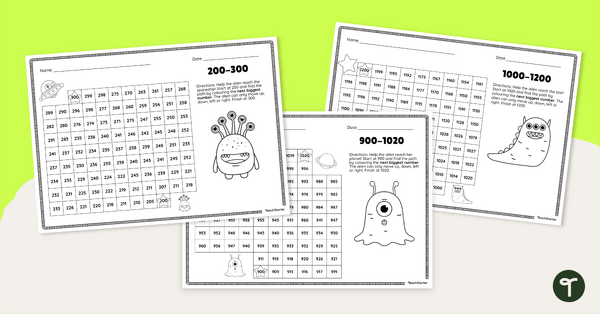
Number Order Puzzles (Ordering Numbers to 1200)
Give your students these number order puzzles for a fun way to sharpen their skills in ordering numbers up to 1200.
- Plus Plan
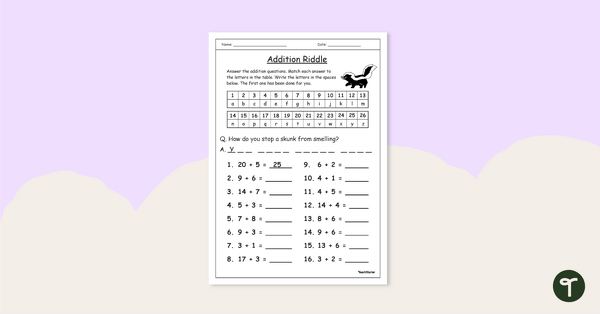
Simple Addition Riddle Worksheet
Download this simple addition worksheet to provide your students with practice adding one- and two-digit numbers.
- Plus Plan
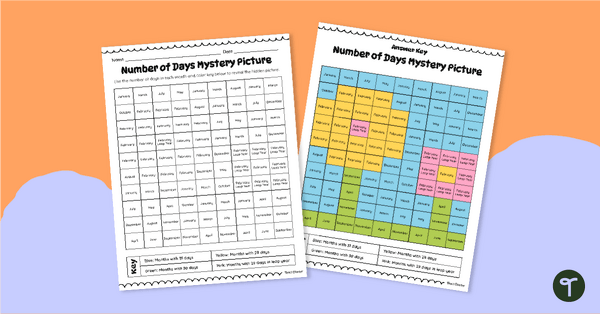
The Number of Days in Each Month - Colour By Code
Help your students remember the number of days in each month with a colour-by-code worksheet.
- Free Plan

Classroom Clock Labels - Flower Display
Use our Flower Wall Clock Labels to create a garden-themed clock display to help children read the time.
- Plus Plan
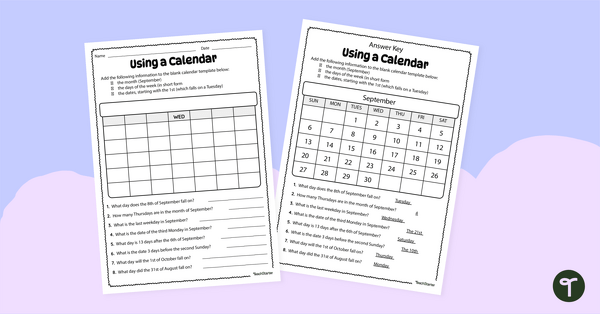
Reading a Calendar – Worksheets
Practise locating information on a calendar with a printable Calendar Worksheet.
- Plus Plan
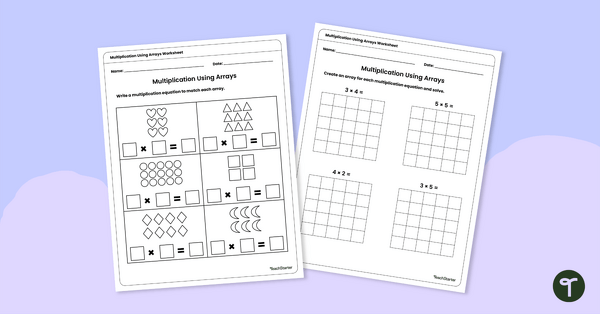
Multiplication Using Arrays Worksheet
Encourage your students to practise multiplication using arrays with this worksheet.
- Plus Plan
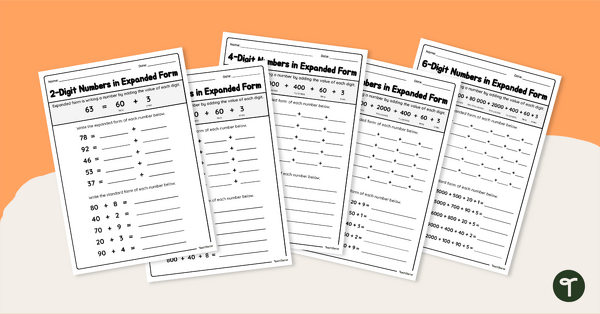
Expanded Form Worksheet Pack
Practise expanding 2-digit to 6-digit numbers with this set of 5 worksheets.
- Plus Plan
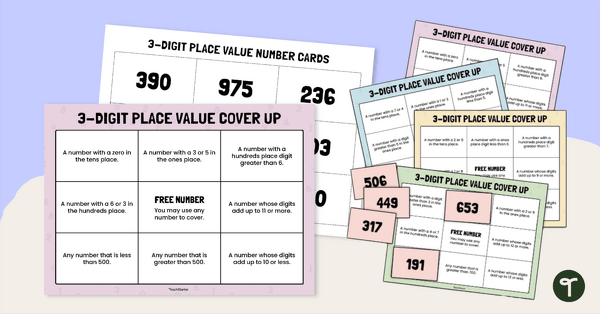
3-Digit Place Value Cover Up Game
Engage students in understanding place value to the hundreds with this place value card game.
- Plus Plan
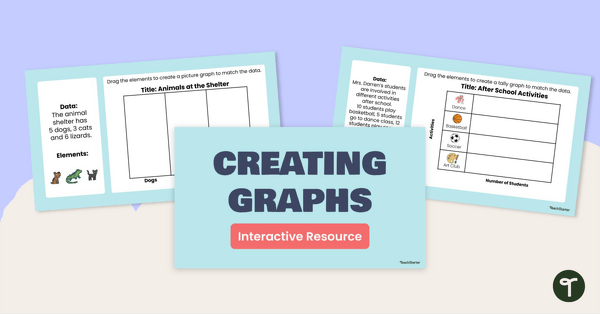
Creating Graphs Interactive Activity
Share this interactive activity with your students to help them practise using digital tools to create graphs from raw data.
- Plus Plan
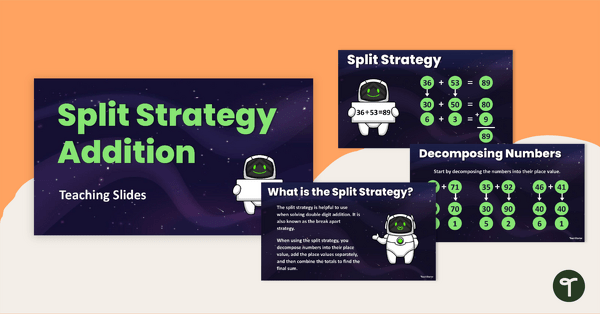
Split Strategy Teaching PowerPoint
Learn all about the split strategy with this teaching PowerPoint.
- Plus Plan
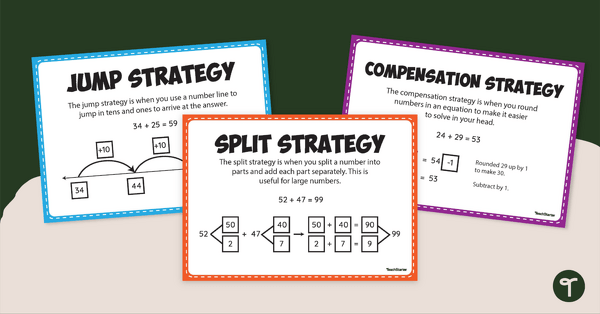
Double-Digit Addition Strategies Posters
Remind your students to use different addition strategies with a set of printable two-digit addition strategies.
- Plus Plan
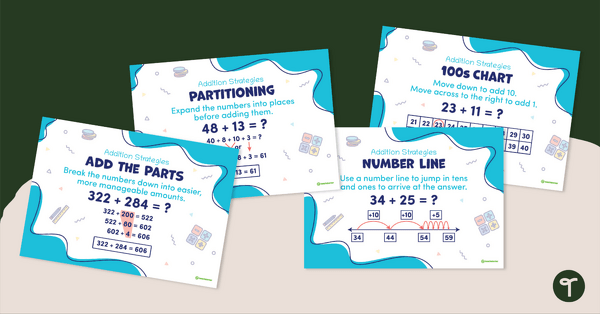
Addition Strategies Posters
Create an addition strategies display"for your students with this set of classroom posters.
- Plus Plan
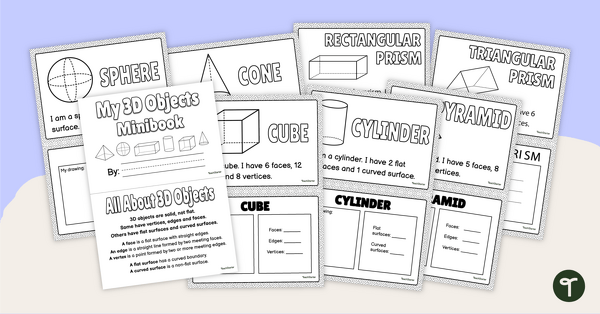
My 3D Object Mini-Book
Explore the properties of some common three-dimensional objects with this printable mini-book.
- Plus Plan

Think Addition - Fact Family Worksheets
Use addition to solve subtraction problems with this worksheet.
- Plus Plan
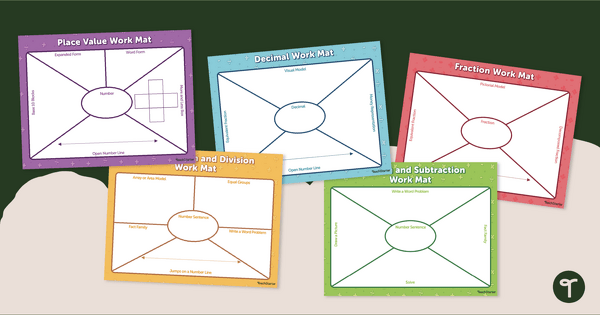
Printable Maths Mats - Graphic Organisers
Practice working on specific math concepts with our set of 5 printable math graphic organisers.
- Plus Plan
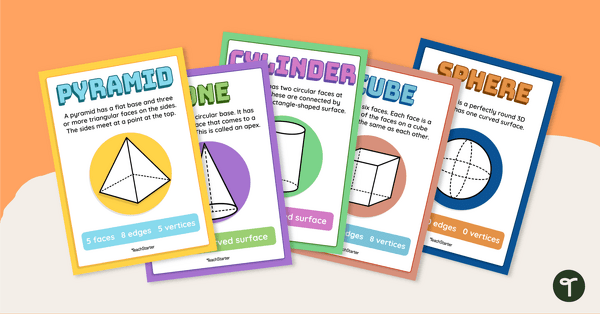
Properties of 3D Objects - Poster Set
Help your students identify the names and properties of common 3D objects with this set of five classroom posters.
- Plus Plan
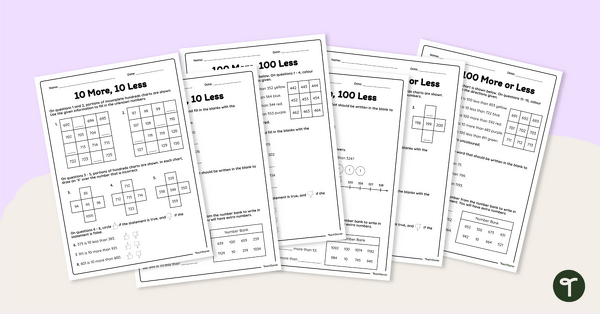
Number Patterns – More and Less Worksheets
Use place value skills to mentally add and subtract 10 or 100 to a given number with this set of worksheets.
- Free Plan
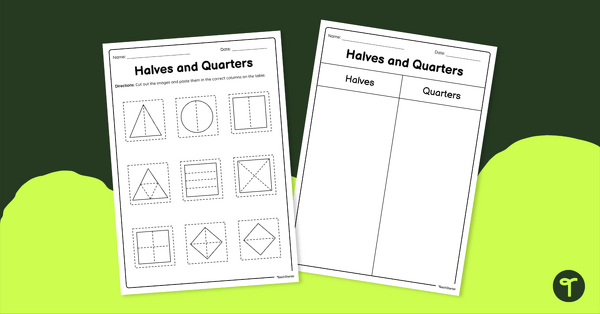
Halves and Quarters – Cut and Paste Worksheet
Practise sorting objects to consolidate students’ understanding of halves and quarters.
- Plus Plan

CUBES Classroom Display and Bookmark Set
Tackle word problems with this CUBES problem-solving classroom display and bookmark set.
- Plus Plan
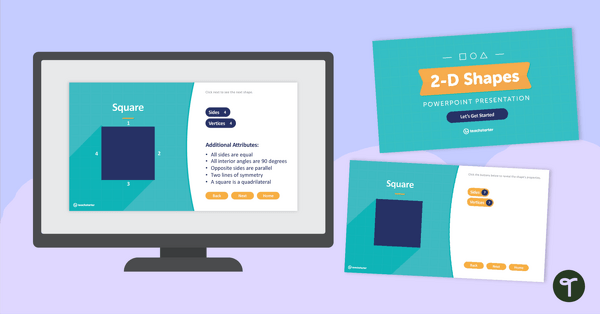
2D Shapes - Interactive PowerPoint Presentation
An interactive PowerPoint presentation that teaches the features of 2D shapes.
- Plus Plan
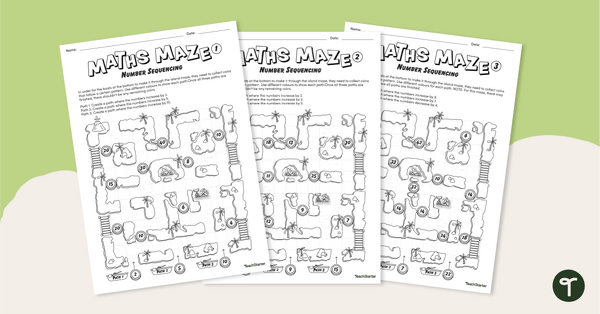
Maths Mazes (Number Sequencing)
Skip count your way through these mazes that focus on number sequencing.
- Plus Plan
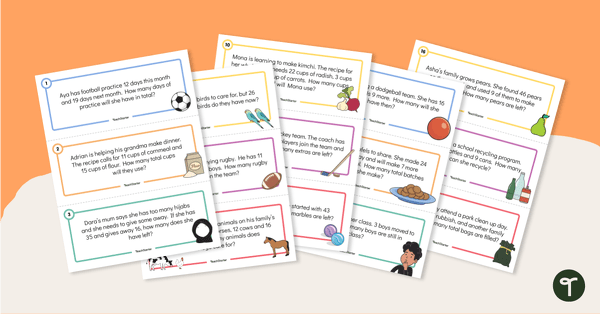
Addition and Subtraction Word Problem Task Cards (Numbers 10-50)
Use a range of addition and subtraction strategies to solve twenty word problems that contain numbers 10–50.
- Plus Plan
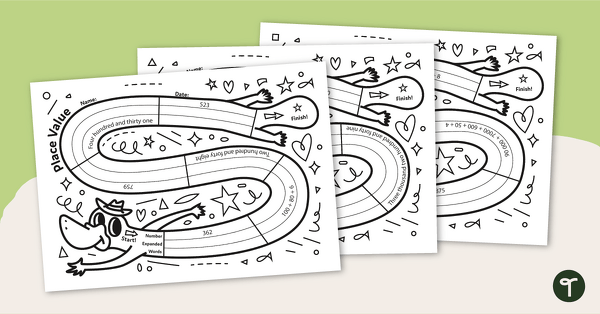
Place Value Worksheets (Platypus Theme)
Practise expanded notation and writing numbers in words with the Place Value Platypus.
- Plus Plan

Year 2 Numeracy Exit Tickets – Worksheets
35 Numeracy Exit Ticket activities for students to provide evidence of their learning progress.